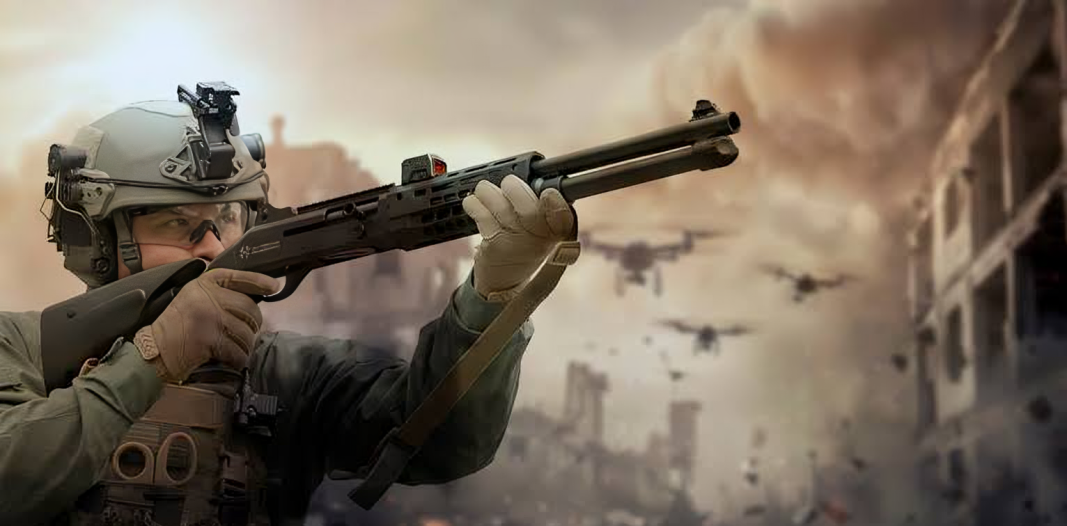The Indian Army will reportedly initiate the procurement of 150 Counter-Unmanned Aerial System (CUAS) kinetic systems equipped with 12-gauge semi-automatic shotguns, in a strategic move to strengthen the nation’s defenses against the growing use of unmanned aerial vehicles (UAVs) in future conflicts. These systems will be designed to disable drones weighing up to 30 kilograms, particularly multicopters and quadcopters expected to be deployed in future hostile operations along the borders.
The acquisition will form part of a larger military strategy to counter increasingly sophisticated drone threats that may evade traditional electronic countermeasures. The shotgun-based systems will provide a kinetic solution for close-range engagements and are expected to complement the Indian Army’s existing radar and jamming-based counter-drone infrastructure.
This development will follow the successful trial of the indigenous Rudrastra Hybrid VTOL UAV, which was conducted on June 11, 2025, at the Pokharan Firing Range. Developed by Solar Defence and Aerospace Limited (SDAL), the Rudrastra will demonstrate capabilities such as extended flight endurance, real-time surveillance, and precision targeting across a 170-kilometer range. The Army’s future plans will include simultaneous investments in indigenous drone development and anti-drone defenses.
Experts predict that the upcoming deployment of shotgun-based CUAS systems will provide a practical response to real-time battlefield scenarios where drones operate at low altitudes or in complex environments. These systems will be expected to offer rapid deployment and utility in areas where electronic solutions may be ineffective, such as urban or forested zones.
Globally, similar solutions have already been deployed and will likely inspire India’s implementation. Belgium’s Kleine-Brogel Air Base has used Benelli M4 shotguns for drone defense, while Ukraine’s 53rd Mechanised Brigade adapted similar systems in 2024. The Drone Guardian version of the Benelli M4 is known to offer effective engagement up to 100 meters, an approach India will likely model.
Nonetheless, the Army will face limitations with this technology. Experts caution that such weapons will have restricted range and require accurate visual tracking, making them less effective at long distances. These shotguns will not replace more advanced counter-drone technologies but will serve as an additional line of defense in a multi-layered system.
The Indian Army’s future counter-drone doctrine will likely focus on hybrid solutions combining kinetic, electronic, and AI-based technologies. With drone warfare expected to play an increasingly central role in modern conflicts, this upcoming shotgun acquisition will mark the beginning of a broader adaptation strategy to meet the evolving threat landscape.













